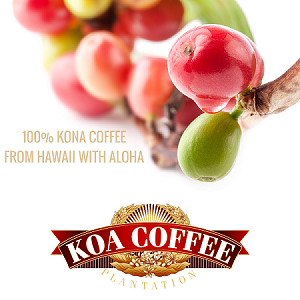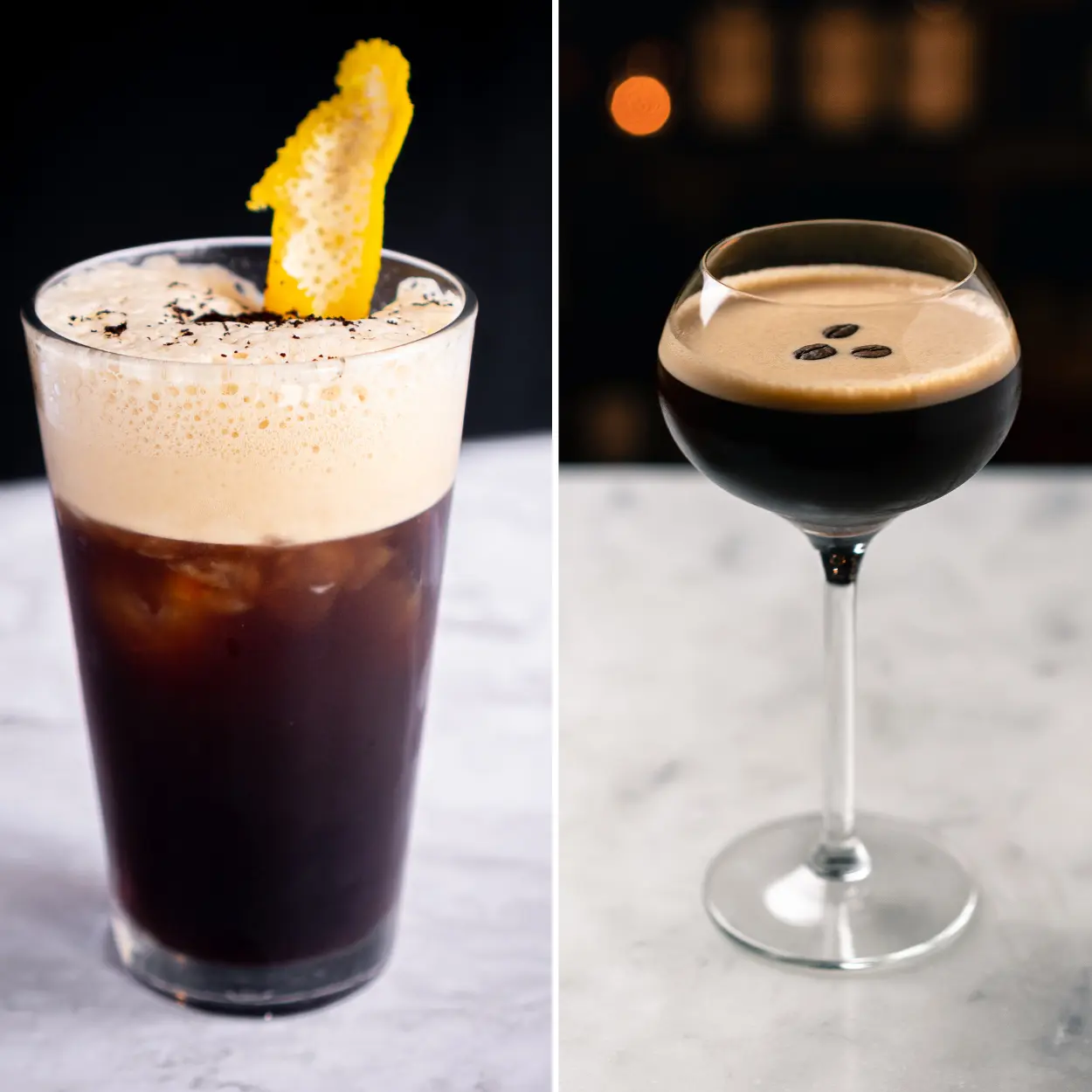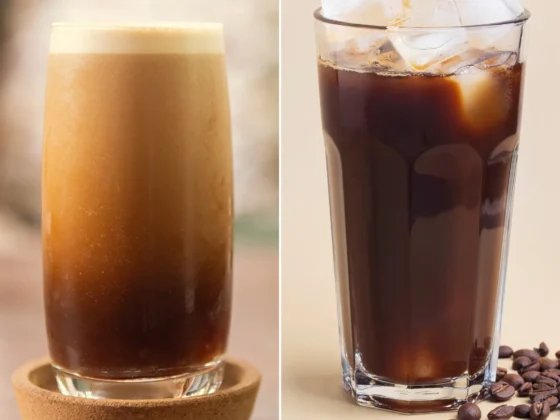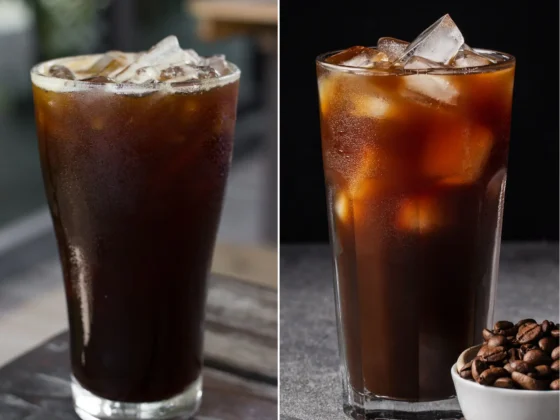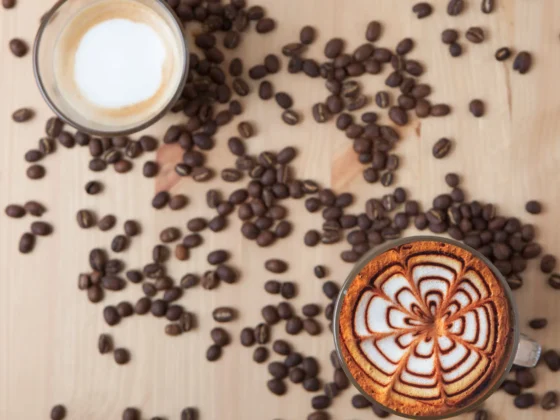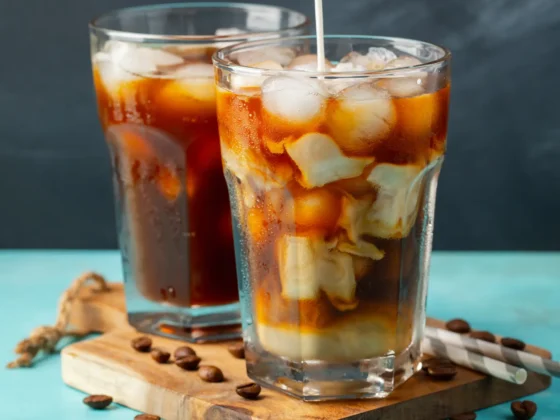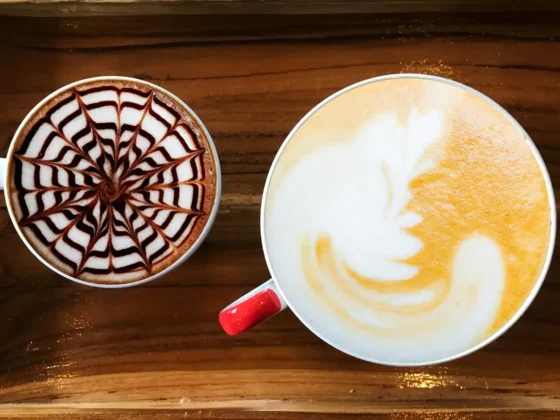What Color is Coffee? It’s a question that may seem simple at a glance but unravels into a fascinating exploration when looked at more closely. Coffee, one of the most beloved beverages globally, is more than just a morning pick-me-up or an afternoon delight. Its color is a story, a narrative that connects farmers, roasters, baristas, and coffee lovers worldwide.
The color of coffee is not merely a shade; it’s an expression of culture, a marker of taste, and an indication of the process that transforms a simple bean into the aromatic cup that millions savor daily. What color is your coffee? It may be a rich dark brown, a mellow tan, or even a lively golden. Each hue has its own personality, influenced by factors such as the bean’s origin, roasting, brewing method, and even the milk or sweetener you add.
In this comprehensive guide, we’ll delve into the palette of this beloved beverage. We will journey from the lush coffee farms to the bustling cafes, uncovering the science, art, and passion that shape the color of every cup. Join us as we explore the shades of coffee that have stirred emotions, inspired creativity, and sparked connections across time and geography. Whether you’re a casual drinker or a connoisseur, you’ll discover the colors of coffee in a whole new light.
Color of Coffee: Key Takeaway
- Color as a Flavor Guide: The color of coffee gives insights into its flavor profile, from the bright and fruity light roasts to the rich and robust dark roasts.
- Cultural Coffee Connections: The color of coffee beans and brews holds varied meanings across different cultures, reflecting social values, traditions, and rituals.
- Nutritional Insights through Color: The different shades of roasted coffee signify variations in nutritional value, with lighter roasts often retaining more antioxidants and vitamins.
- Coffee’s Color and Sustainable Choices: The color of coffee beans can reveal insights into sustainability considerations, linking roasting practices to environmental impact.
- Enhancing the Coffee Experience through Color Analysis: Analyzing the color of coffee like a professional allows enthusiasts to predict flavors, assess quality, and create perfectly paired culinary experiences.
The Journey from Farm to Cup
The rich and varied colors of coffee are a journey in themselves, a tale that starts on the farm and culminates in your cup. Let’s explore this intricate process step by step, discovering the roles played by beans, processing, and brewing methods.
Coffee Bean Colors: Unroasted to Roasted
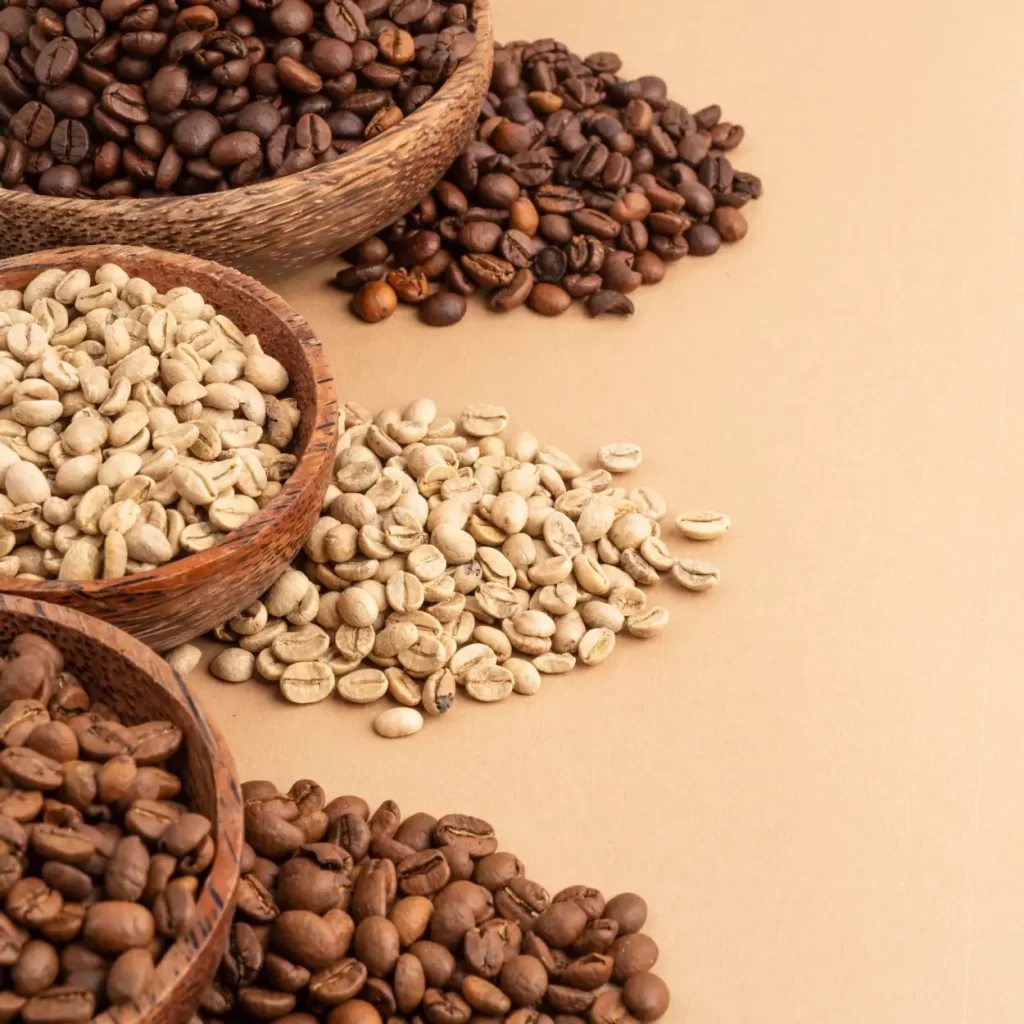
The lifecycle of coffee begins with a vibrant green bean. As they are exposed to heat during the roasting process, they undergo a magnificent transformation:
- Green: The initial color of an unroasted coffee bean, rich in chlorogenic acid. (1)
- Yellow: As roasting begins, the beans turn a soft yellow, signaling the start of caramelization.
- Light Brown: As the roast progresses, the beans achieve a light brown hue, usually associated with a mild flavor.
- Medium Brown: At this stage, a balanced flavor profile emerges. This is often referred to as a medium roast.
- Dark Brown: Dark roast beans are nearly chocolate in color, providing a bold, robust flavor.
This transformation from green to dark brown is a visual spectacle that also hints at the underlying chemical changes and flavor development.
Processing and its Impact on Coffee Color
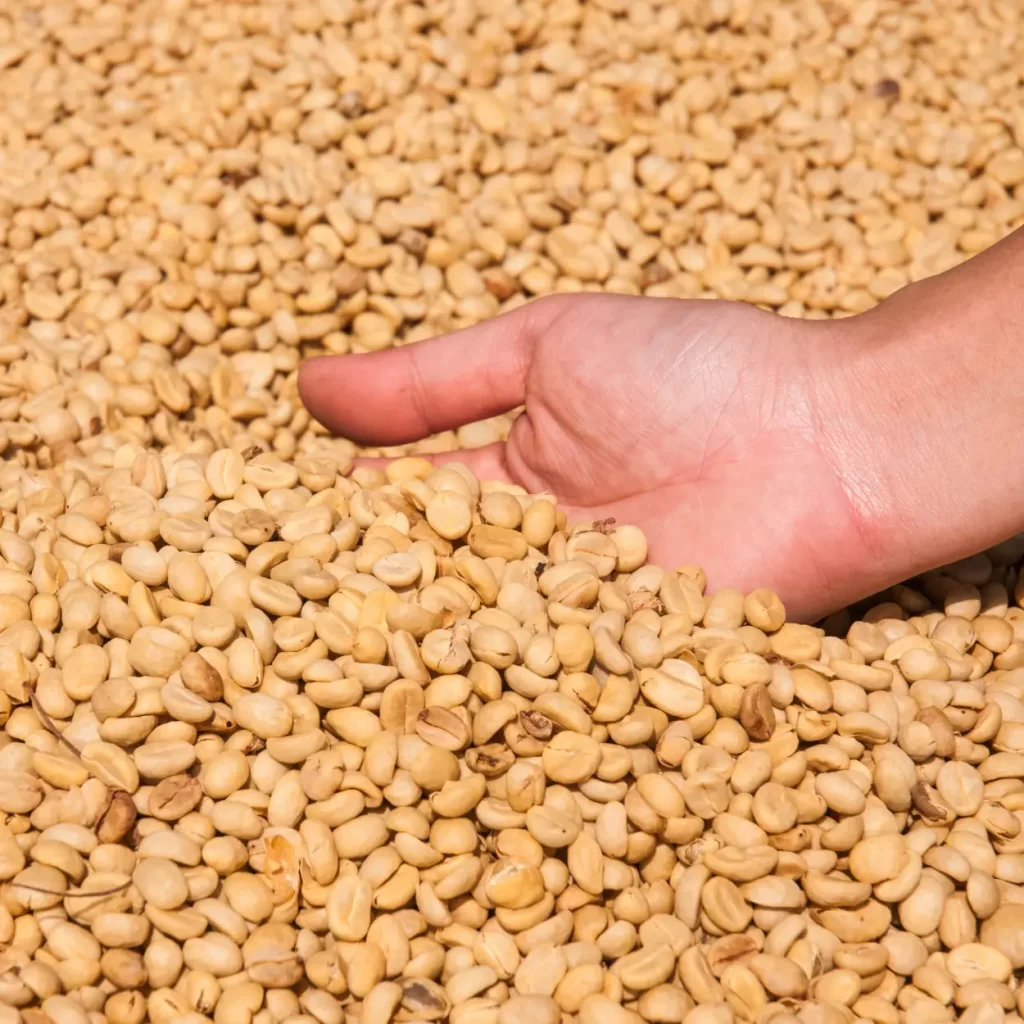
Post-harvest processing can also have a profound impact on the final color of the coffee bean. There are several methods used, and each can influence the color:
- Washed Process: Beans are depulped, fermented, and washed to remove the mucilage. This often leads to a clean, bright cup and can slightly lighten the color of the green bean.
- Honey Process: Beans are dried with some or all of the mucilage remaining. This can create a range of colors in the unroasted bean from pale yellow to orange or red, depending on the amount of mucilage left.
- Natural Process: The cherries are dried whole, often leading to a darker green or blue-green hue in the unroasted beans, with a more fruity and complex flavor in the cup.
These processing methods not only affect the appearance of the raw beans but can also influence the taste and visual appeal of the brewed coffee.
Influence of Brewing Techniques on Coffee’s Color
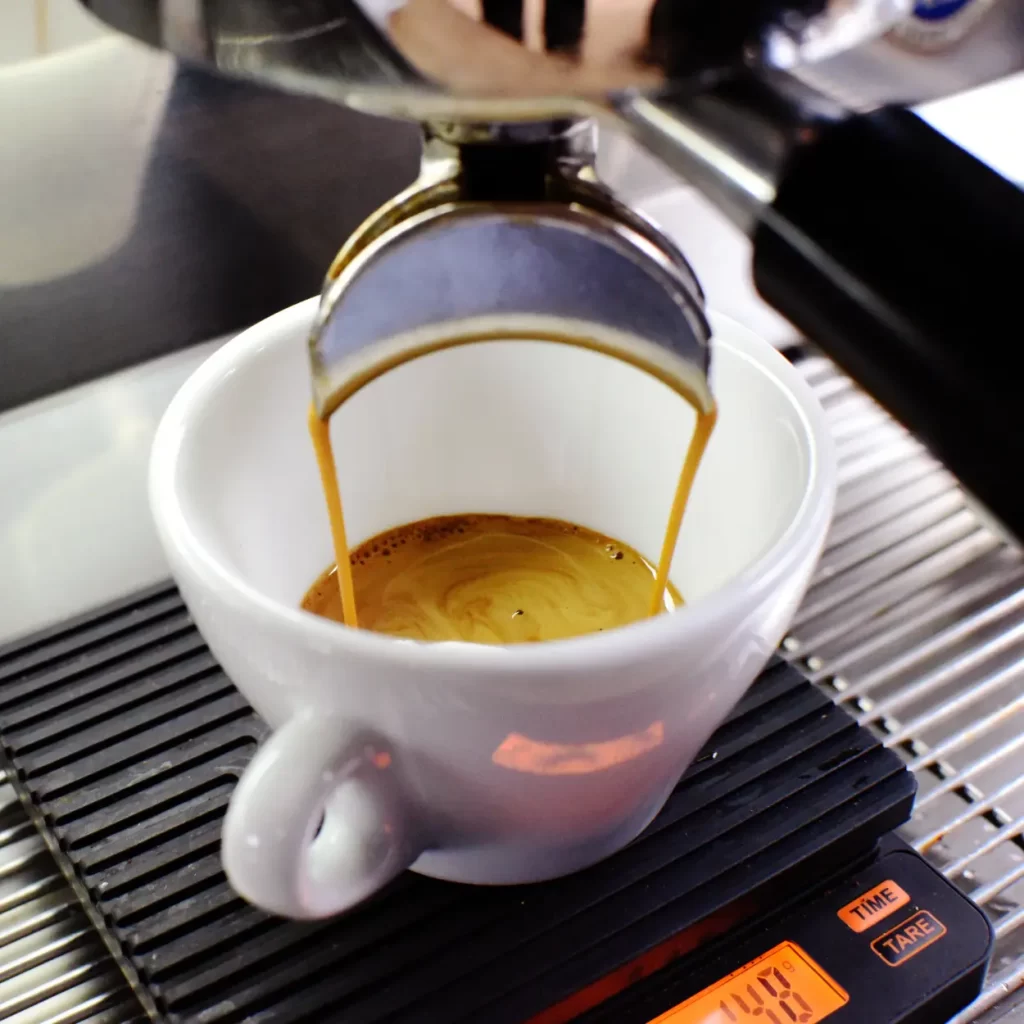
The final color of a coffee cup is not only determined by the bean and its processing but also by how it’s brewed. Different techniques can lead to varying shades and visual aesthetics:
- Espresso: A concentrated brew, usually dark brown with a golden crema on top.
- French Press: Tends to create a rich and full-bodied brew, often deeper in color.
- Pour-over: Depending on the grind size and pouring technique, this can result in a lighter, more nuanced color.
- Cold Brew: Often appears darker and more opaque, as it’s made with a higher ratio of coffee to water.
Understanding the influence of brewing techniques can empower you to control not only the flavors but also the appearance of your coffee.
The journey of coffee’s colors is a fascinating blend of art, science, and technique. From the vibrant green of the raw beans to the deep brown of a lovingly brewed cup, each step in the process adds a unique hue and essence. Whether you’re an enthusiast wanting to delve deeper or a casual coffee drinker, the colors of coffee offer an enriching and satisfying experience.
Cultural and Aesthetic Perspectives
Coffee transcends its role as a beverage and has become an essential part of various cultures and aesthetics. Its colors not only tantalize the taste buds but also inspire art, design, and even societal preferences. In this section, we’ll explore the multifaceted roles played by the color of coffee in various domains.
Coffee in Art: Color Symbolism
Coffee’s rich hues have long inspired artists, who have employed its colors to evoke emotions, set moods, and create visual narratives. The symbolism attributed to the color of coffee in art includes:
- Warmth and Comfort: The brown shades often symbolize warmth, comfort, and homey feelings, evoking images of a peaceful coffee break.
- Sophistication and Elegance: Darker tones can be used to convey a sense of sophistication and elegance, reflecting the coffee culture in many urban settings.
- Energy and Vigor: The vibrant contrast of black coffee against a white cup has been used to symbolize energy and vitality, reflecting the drink’s stimulating effects.
These artistic interpretations of coffee’s colors connect us to broader human emotions and experiences, making it a versatile medium in visual art.
Coffee’s Role in Design and Advertising
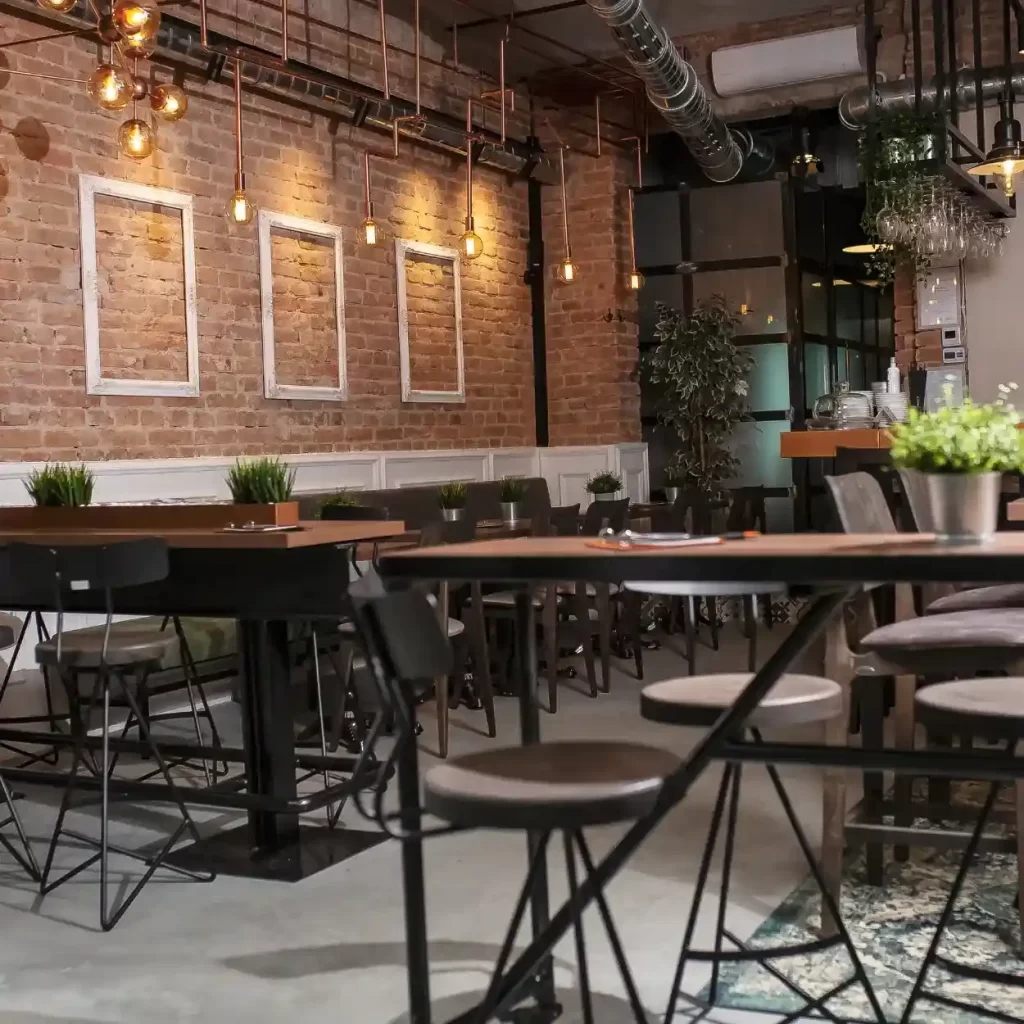
In the world of design and advertising, the colors of coffee are employed strategically to create associations, drive consumer behavior, and establish brand identity. Here’s how:
- Branding: Many coffee shops use coffee’s earthy tones in their logos and interiors to create a welcoming and authentic ambiance.
- Advertising Campaigns: Advertisers often use the rich brown and creamy shades of coffee to invoke cravings and associate the product with luxury or comfort.
- Product Packaging: The choice of colors in coffee packaging can communicate the strength, flavor, and origin of the coffee, appealing to specific consumer preferences.
The utilization of coffee’s colors in these commercial contexts showcases how deeply it’s integrated into our visual culture.
Coffee Color Preferences Around the World
The way people prefer their coffee’s color can vary dramatically around the world, reflecting cultural norms, historical influences, and even socio-economic factors:
- Italy: A strong preference for deep, dark espressos, signifying the country’s love for robust flavors.
- Sweden: A trend towards lighter roasts, reflecting the country’s coffee-drinking tradition known as ‘fika,’ where coffee is enjoyed with friends and family. (2)
- Japan: A diverse palette, from dark traditional brews to colorful coffee art, showcasing the country’s blend of tradition and innovation.
- Brazil: Often enjoyed with generous amounts of sugar and milk, leading to a lighter color, mirroring the nation’s sweet tooth.
These global preferences highlight how the colors of coffee are not merely aesthetic choices but also expressions of culture, tradition, and individuality.
The cultural and aesthetic perspectives of coffee’s colors weave a rich tapestry that transcends geography and generations. Whether through the emotive strokes of an artist’s brush, the strategic design of a brand, or the varied preferences across cultures, the colors of coffee continue to inspire, connect, and define our shared human experience.
Science and Chemistry of Coffee’s Color
The colors of coffee are not merely shades to the eye; they are the result of complex chemical reactions and transformations. To truly appreciate the visual spectacle of coffee, we must delve into the science that paints its palette.
The Chemical Changes Leading to Color Variations

Coffee’s color variations result from intricate chemical changes occurring at different stages. Here’s an in-depth look:
- Chlorogenic Acids: As previously mentioned, in green beans, chlorogenic acids are prominent, giving the bean its initial color.
- Maillard Reaction: During roasting, sugars, and amino acids react, forming new compounds that change the bean’s color from green to yellow to brown.
- Caramelization: Sugars break down further into simpler compounds, deepening the color and influencing the flavor.
These reactions are interdependent and together contribute to the bean’s final color.
How Roasting Affects Coffee’s Color
Coffee roasting is an art and a science, with temperature, time, and technique playing crucial roles:
- Light Roast: Achieved at temperatures around 356°F-401°F, resulting in a light brown color, preserving many of the original compounds.
- Medium Roast: Around 410°F-428°F, bringing a balanced brown color with a perfect blend of acidity and body.
- Dark Roast: Beyond 437°F, turning the beans from dark brown to nearly black. This stage sees more oils and aromatic compounds being released.
Each stage of roasting contributes to not only the color but also the complexity and nuance of the resulting brew.
Relationship Between Color and Flavor

The color of a coffee bean is not just an aesthetic quality; it also hints at the flavor profile within:
- Light-Colored Brews: Often acidic, bright, and may retain some fruity notes.
- Medium-Colored Brews: Provide a harmonious blend of acidity, body, and flavor complexity.
- Dark-Colored Brews: Bold, robust, with pronounced bitterness and reduced acidity.
The relationship between color and flavor demonstrates how visual cues can guide us in selecting coffee that aligns with our taste preferences.
The science and chemistry behind the colors of coffee provide a captivating look into a world where aesthetics meets analysis. It reveals that each shade is a marker of chemical transformation, roasting mastery, and a gateway to unique flavor experiences. By understanding these aspects, coffee enthusiasts can deepen their appreciation and connection with this remarkable beverage, turning every cup into an exploration of chemistry, art, and taste.
Coffee Color and Health
The colors of coffee are not just visually appealing; they can also tell us much about the beverage’s nutritional content, acidity, strength, and even its environmental impact. In this section, we explore how the hues of coffee can be indicative of various health and sustainability considerations.
Nutritional Value and Color

The color of a coffee bean is not just an aesthetic quality; it reflects the nutritional content of the bean. Here’s how the colors of coffee correlate with different nutritional aspects:
Light Roasts
- Chlorogenic Acid Retention: As discussed, light roasting retains more chlorogenic acid, a primary antioxidant in coffee. This compound has been studied for its potential benefits in weight management, blood sugar regulation, and cardiovascular health.
- Other Antioxidants: Besides chlorogenic acid, other antioxidants such as ferulic acid and caffeic acid are preserved, which contribute to neutralizing harmful free radicals in the body.
- Vitamins and Minerals: Essential nutrients like riboflavin, pantothenic acid, and potassium are more present in lighter roasts, enhancing the overall nutritional value.
- Flavor Profile: Typically brighter and more acidic, light roasts can be more complex, preserving the unique characteristics of the bean’s origin.
Medium Roasts
- Balanced Antioxidants: The medium roast is a balance between preserving antioxidants and developing flavors. While some chlorogenic acid is lost, enough is retained to provide health benefits.
- Maillard Reaction: This roasting stage leads to the Maillard reaction, where amino acids and sugars interact, forming flavorful compounds and contributing to the rich brown color.
- Balanced Flavor and Nutrients: Often described as a balanced cup, medium roasts offer a harmonious blend of flavor and nutrition, making them a popular choice for many coffee drinkers.
Dark Roasts
- Reduction in Antioxidants: Darker roasting degrades some antioxidants like chlorogenic acid but forms other beneficial compounds.
- Increased N-methylpyridinium (NMP): This compound, found more in dark roasts, may enhance stomach health by reducing acid production.
- Complex Flavor Development: Dark roasts offer deep, robust flavors, often with notes of chocolate and spice. This intense flavor comes with reduced acidity and a fuller body.
- Caffeine Content: Dark roasting slightly reduces caffeine content, though the difference is minimal and often unnoticeable in taste.
The variations in the color of coffee beans reveal a rich tapestry of nutritional values and choices. By understanding these correlations, coffee enthusiasts can align their preferences with specific health benefits and flavor profiles. Whether seeking higher antioxidant content or a balanced, flavorful cup, the colors of coffee provide a delightful and informative guide to the world of coffee nutrition.
Coffee’s Color as an Indicator of Acidity and Strength
The color of brewed coffee is often a reflection of its acidity and strength:
- Lighter Shades: Usually indicative of higher acidity, often associated with bright, citrus-like flavors.
- Darker Shades: Often imply a bolder and more robust flavor, with reduced acidity. Darker colors often correlate with a strong, intense brew.
Understanding these visual cues can help individuals choose coffee that aligns with their preferences for acidity and strength.
Coffee Color and Sustainability Considerations
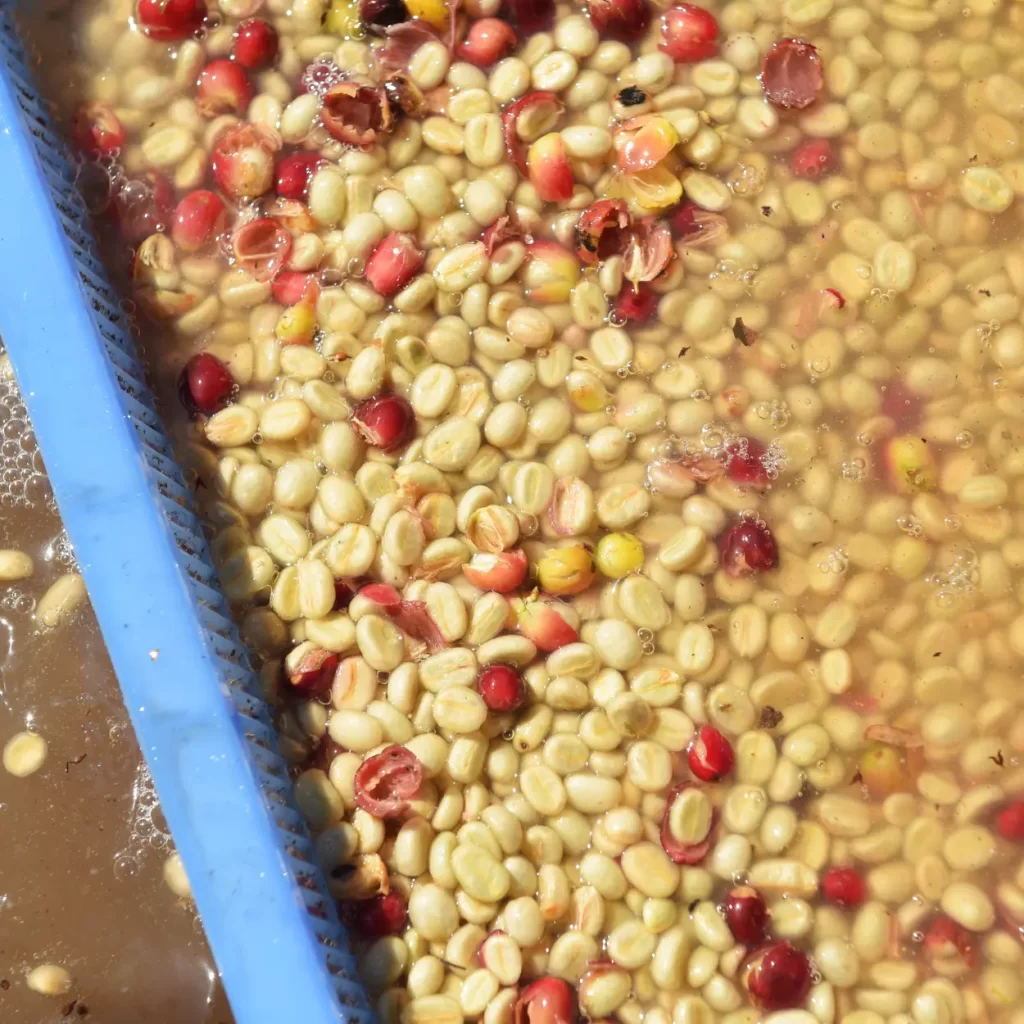
The colors of coffee are also intertwined with sustainability factors:
- Shade-Grown Coffee: Typically resulting in greener unroasted beans, shade-grown coffee supports biodiversity and reduces the need for chemical inputs.
- Wet Processing: Although leading to lighter green beans, wet processing can be water-intensive, raising sustainability concerns.
- Roasting Choices: Lighter roasts require less energy, potentially making them more sustainable than darker roasts, which demand higher temperatures and longer roasting times.
Considering these factors, the colors of coffee can be a pathway to more mindful consumption and environmental stewardship.
The multifaceted relationship between coffee’s colors and health transcends aesthetics and reveals connections with nutrition, personal preferences, and even global sustainability efforts. By understanding these links, coffee drinkers can make informed choices that align with their health goals and values. Whether choosing a coffee for its antioxidants or its alignment with sustainable practices, the colors of coffee offer a guide to a fulfilling and responsible coffee experience.
The Coffee Connoisseur’s Guide
Being a coffee connoisseur goes beyond just sipping; it involves a deep understanding of the intricate relationships between the appearance, taste, and pairing of coffee. The color of coffee plays a pivotal role in these aspects, making it a vital tool for those who seek to explore coffee at an advanced level.
How to Analyze Coffee’s Color Like a Pro
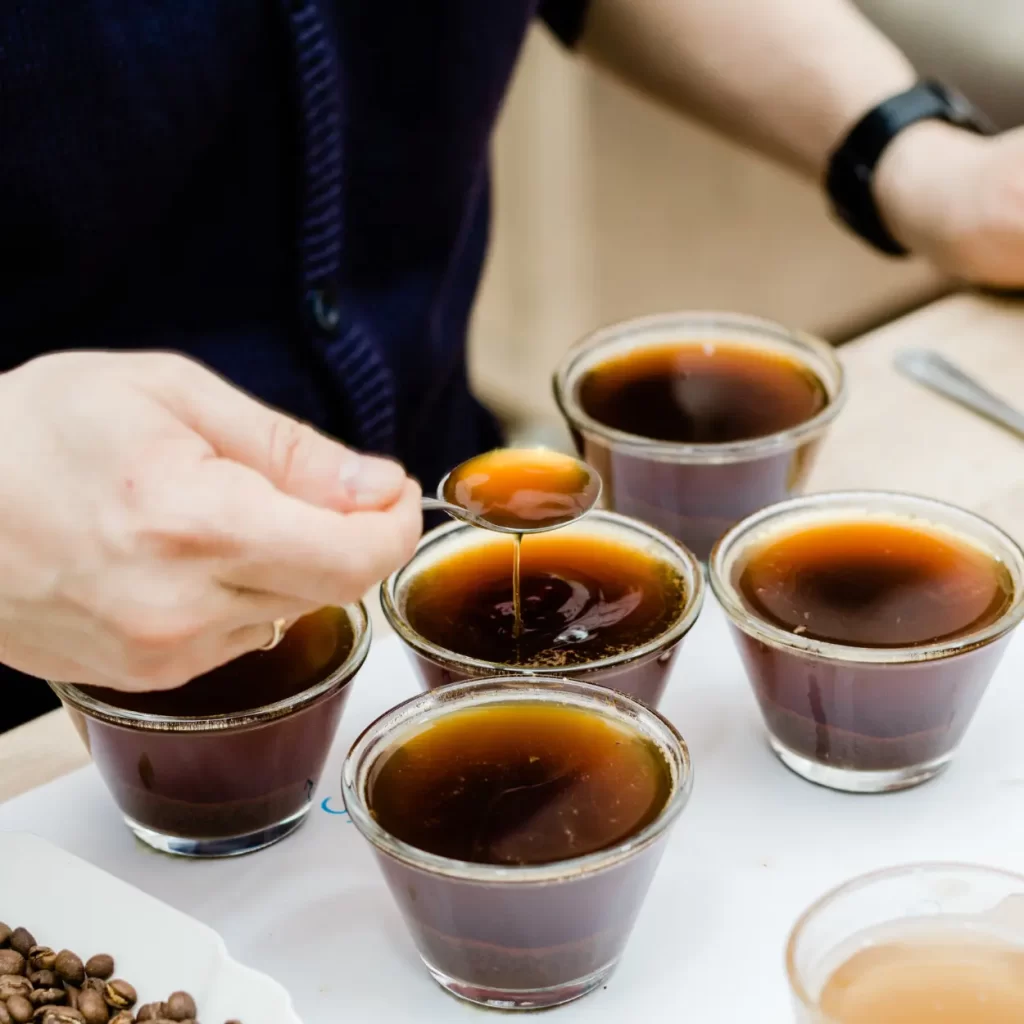
Analyzing the color of coffee is an art that professionals use to gauge quality, roast level, and flavor potential. Here’s how you can do it like a pro:
- Visual Examination: Use a clean, transparent cup and good lighting to observe the color. Look for clarity, richness, and depth in the color.
- Roast Analysis: The color can indicate the roast level – light, medium, or dark. This can guide you in predicting the flavor profile and potential acidity.
- Colorimeters and Technology: Some professionals employ colorimeters, devices that scientifically measure the color, allowing for precise classification and quality control.
- Taste Correlation: Practicing the alignment between color and taste over time helps build an intuitive understanding, enabling you to predict flavors based on visual cues.
Coffee’s Color Impact on Taste Experience
The color of coffee is more than a visual appeal; it directly impacts the taste experience:
- Light-Colored Coffee: Often associated with higher acidity and more nuanced flavors like floral, citrus, or fruity notes.
- Medium-Colored Coffee: Usually leads to a balanced taste with both acidity and body, allowing for a wide array of flavor experiences.
- Dark-Colored Coffee: The darker the color, the bolder the flavor, often with pronounced bitterness and richness, like chocolate or smoky notes.
- Psychological Factors: The color itself can influence perception, with darker colors often perceived as stronger, regardless of actual caffeine content.
Pairing Coffee with Food: A Color Perspective
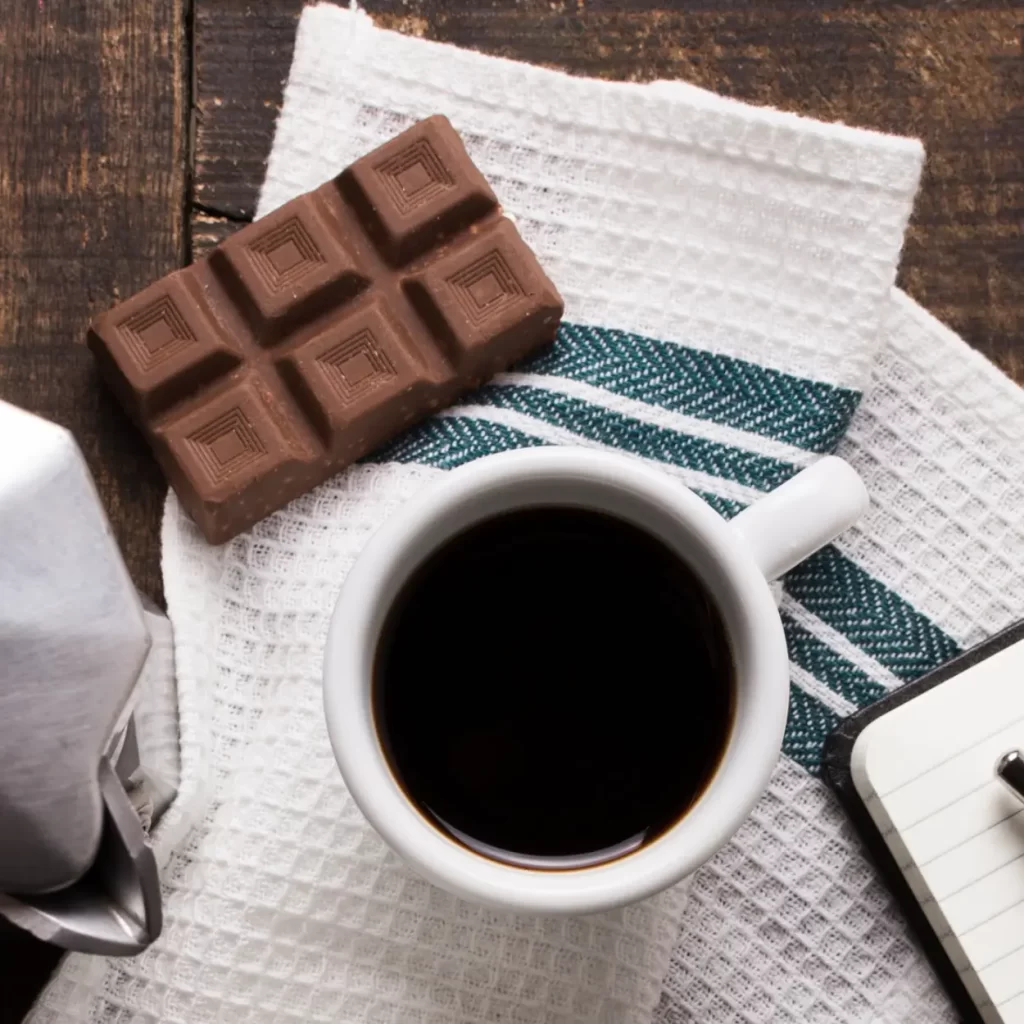
Understanding the color of coffee can also guide successful pairing with food:
- Light Roasts: Often paired with light and tangy foods, like fruit tarts or citrus pastries, to complement the bright acidity.
- Medium Roasts: Versatile in pairing, suitable for both savory and sweet dishes, like muffins, sandwiches, or salads.
- Dark Roasts: Perfect for rich and flavorful foods like dark chocolate, heavy desserts, or meat dishes, aligning with robust flavors.
The color of coffee serves as a multifaceted tool for the coffee connoisseur, providing insights into roasting, flavor prediction, and food pairing. Whether through visual examination or understanding the psychological impact of color on taste, this guide offers both beginners and experts a way to enhance their coffee experience. The subtle shades and deep hues of coffee become a language, expressing the character, quality, and potential of every cup. By tuning into the color, you can turn every coffee moment into a symphony of senses, making each sip a celebration of complexity and joy.
Conclusion
In this comprehensive exploration of the intriguing question, “What Color is Coffee?” we’ve journeyed through the multifaceted world of coffee’s hues, discovering the significance behind each shade. From the raw beans on the farm to the perfectly brewed cup, the color of coffee reveals a symphony of science, culture, art, nutrition, and even sustainability.
We have seen how the color of your coffee is not merely a visual treat but a gateway to understanding its flavor, health benefits, and ethical considerations. It guides the connoisseurs in their appreciation, the artists in their creations, and the everyday drinker in their choices.
The rich palette of coffee’s colors offers more than meets the eye. It invites us to experience our beloved beverage on a whole new level, where each shade holds a story, a taste, a connection to the earth, and a celebration of human creativity. So the next time you ponder, “what color is your coffee?” take a moment to delve into the depth of the colors in your cup, and savor the incredible complexity that makes coffee a global treasure.
By embracing the colors of coffee, we can transform a simple daily ritual into a profound sensory adventure, enriching our lives one cup at a time.
FAQ
How does the color of coffee affect its taste?
The color of coffee is indicative of its roast level, which in turn affects the flavor profile, ranging from acidic and fruity in light roasts to bold and rich in dark roasts.
Can you determine the quality of coffee by its color?
While color can provide insights into the roast level and potential flavor, it's not a definitive indicator of overall quality, as other factors like bean origin and freshness play crucial roles.
What is the significance of coffee's color in different cultures?
Coffee's color holds various cultural significances, often symbolizing social status, traditional values, or aligning with specific rituals and ceremonies.
How can a connoisseur use color to enhance the coffee experience?
A connoisseur can analyze the color of coffee to predict its roast level, flavor profile, and create harmonious pairings with food, thus elevating the overall coffee experience.

